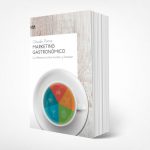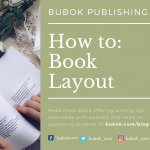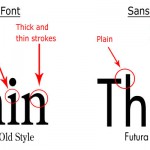Don’t Judge a Book by its Cover
We’re told this from such a young age, but in reality we do the opposite. No, not about people, in which we all know this phrase can be applied to – but with books.
The cover is more often than not the reason why we pick up the book in the first place. Obviously if you have gone in to the book store looking for a specific book then perhaps the cover doesn’t make so much of a difference. However, if you’re just mindlessly browsing the shelves then the cover/spine will be the deciding factor to whether you give it the time of day.
The colour, the font, the title, the layout; all of these factors determine the overall appearance of your book. They say a lot to the audience about your writing before they’ve even given it a chance – so surely you want to make a good impression, right?
A lot of writers may want to create or draw their own cover. Although this is a good exploration of their own skills and a great way of demonstrating their capability, it is also a huge task to ensure the cover is produced to it’s best possible appearance.
Just take a moment to reflect back on your day and think how many images were shoved in your face. Did any of them make you stop? Why do you think these ones had an effect on you? The important thing to take away from this is to emphasise the need to stand out. The media is everywhere, whether we realise it or not, and to get your work noticed, you need to catch the eye. What is it about your cover that is going to be so different? What are you going to do to stop someone from scanning past it in the line up of books?
Take these popular children book covers for example, what do you think makes children pick these out? Do you think these are the ones that make children constantly repeat ‘again, again’? To look at quick glance you would assume it’s the use of the bright colours and illustrations. But if you look deeper into this, there are other reasons that you may only do subconsciously as to why you find them appealing.



Do you notice how in (nearly) all of them the covers display a very obvious title? They all use a contrasting font so the name of the book is easy to find – minus the exception of the Princess and the Pea. However, with this one, the name of the book follows the bend of the illustration and as we have been found to follow lines in pictures/writing, it is still an easy way to be drawn to the title. Similarly, they all stick to a set colour scheme, which says a lot about the book itself. For example, with The Rainbow Fish the prominent use of the colour blue evokes a sense of relaxation and trust between the book and the reader. The exception to this idea is the Mr Men book as this uses multiple colours for its illustrations. Yet it then uses a white background, thus making the characters stand out through the simplistic background. Alongside this, the title itself poses a question to the reader, and so invites them (quite literally) towards the book through the use of rhetoric devices.
While colour is important, the cover also needs to hint at what the story is about; hence deciding whether it attracts you. The example to use here is with The Gruffalo. The way he has a smile on his face (although made to look scary) and is in contrast with a tiny mouse perhaps intrigues the child as to why there is mixed messages and therefore prompts them to pick the book up. This illustrates how even though it is only one drawing, it still gives enough away to the audience as to what the book is about.
Written by Shannon McGinty



 17 / April / 2017
17 / April / 2017 






































 Recent Comments
Recent Comments
